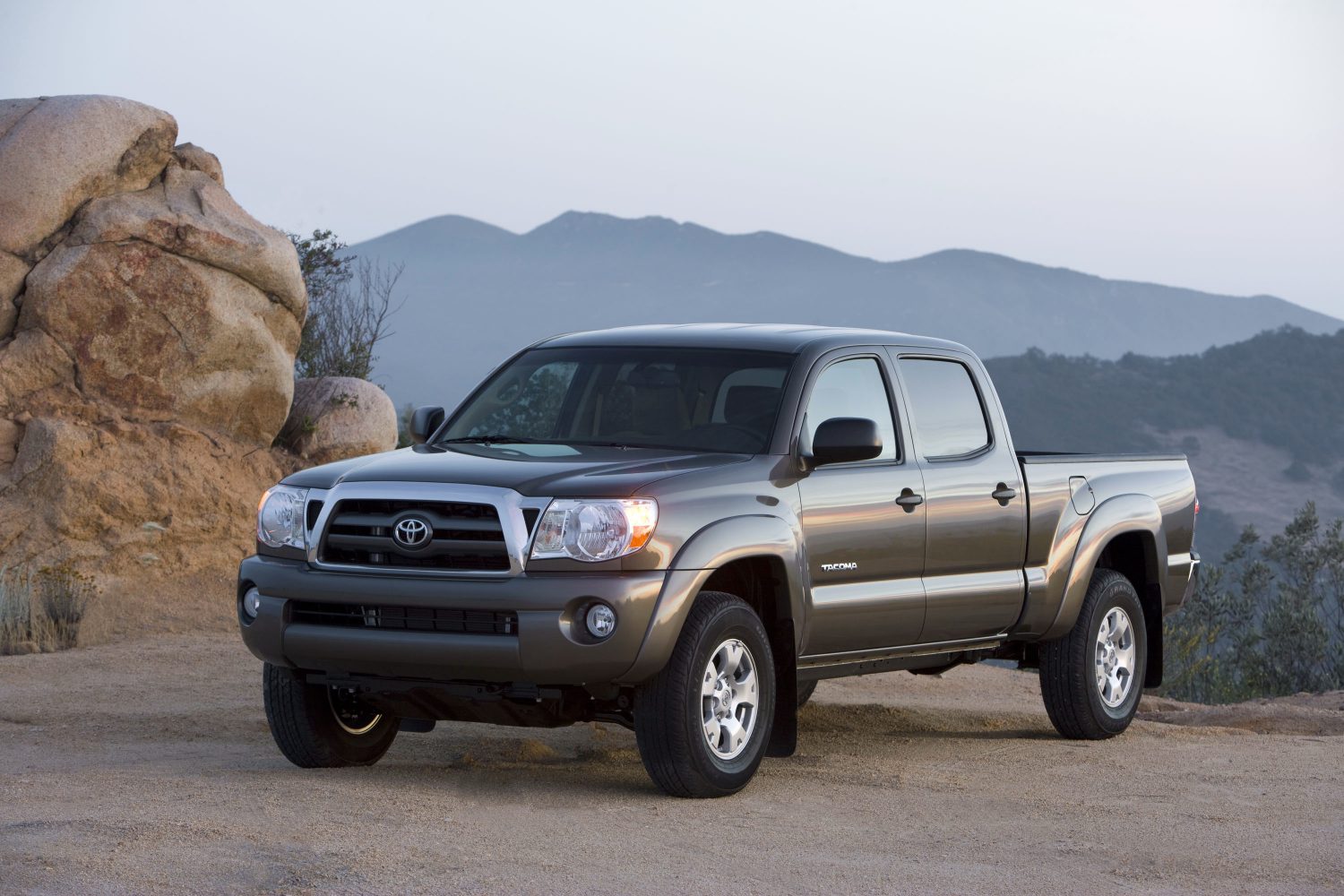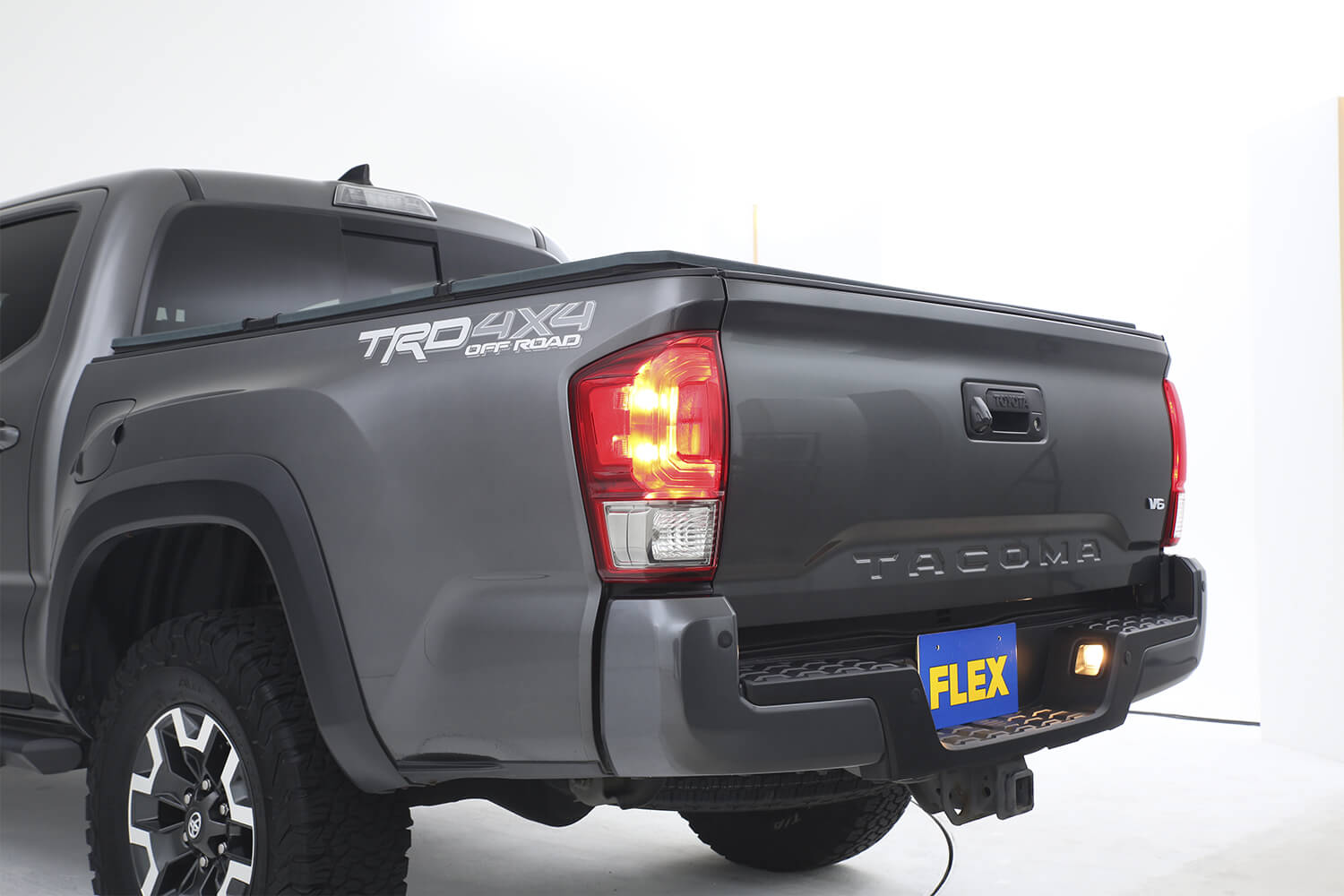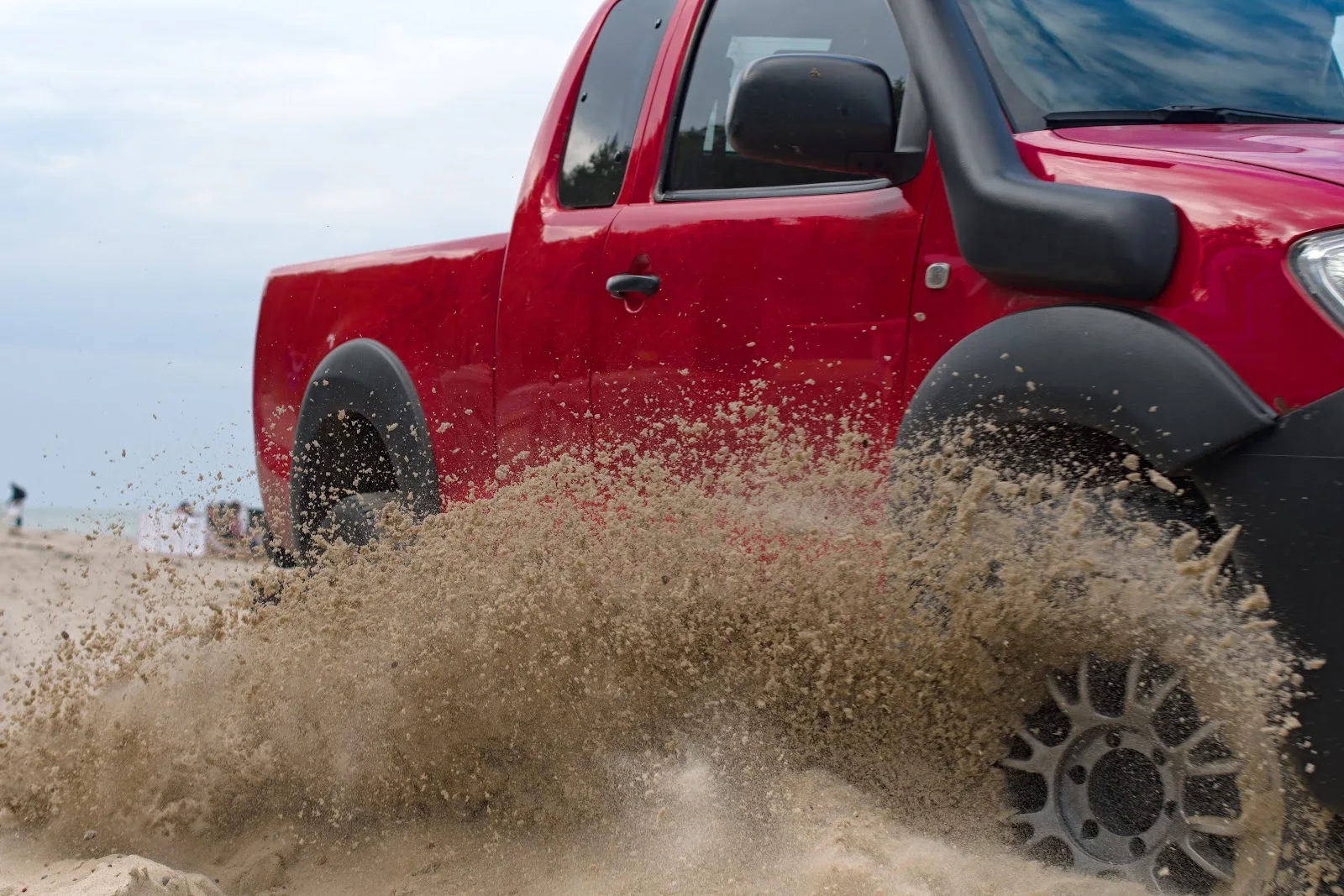All of the photos in this article belongs to Toyota.
When shopping for a used Toyota Tacoma, One of the most frequently asked questions is which year model offers the best reliability. The Toyota Tacoma has built a reputation for long-lasting durability, but certain models stand out as the best choices for drivers who want maximum value and longevity. This guide highlights the best Toyota Tacoma models that consistently deliver strong reliability, proven value retention, and confidence-inspiring performance.
Toyota Tacoma’s Reliability Overview
The Toyota Tacoma has earned a long-standing reputation for exceptional reliability, strong resale value, and durability. The Toyota Tacoma is such a versatile truck that people rely on it for work, travel, and recreation. It’s the perfect size for wheeling around wooded trails, and it has a towing capacity that makes pulling small trailers a walk in the park.
While some models have faced issues over the years, many drivers consider the Toyota Tacoma one of the best midsize trucks for long-term dependability.The story of Mike Neal — whose 2008 Toyota Tacoma racked up 1.625 million miles on the odometer before he passed away — further proves the Toyota Tacoma’s reliability.
Most Reliable Year Models of Toyota Tacoma
Since the introduction of the Toyota Tacoma in 1995, there has been a long history of opinions, owner experiences, and real-world performance data that help identify the most reliable year models.
2005-2015 Models(Second Generation)
The 2005–2015 Toyota Tacoma models are frequently recognized among the best for long-term reliability. These models were powered by a 4.0L V6 that improved towing capability and were available in both 2WD and 4WD configurations. The TRD package strengthened the Tacoma’s off-road reputation, and the Off-Road and Sport trims became popular choices. One special edition — the X-Runner — featured a sport-tuned suspension and aggressive design.
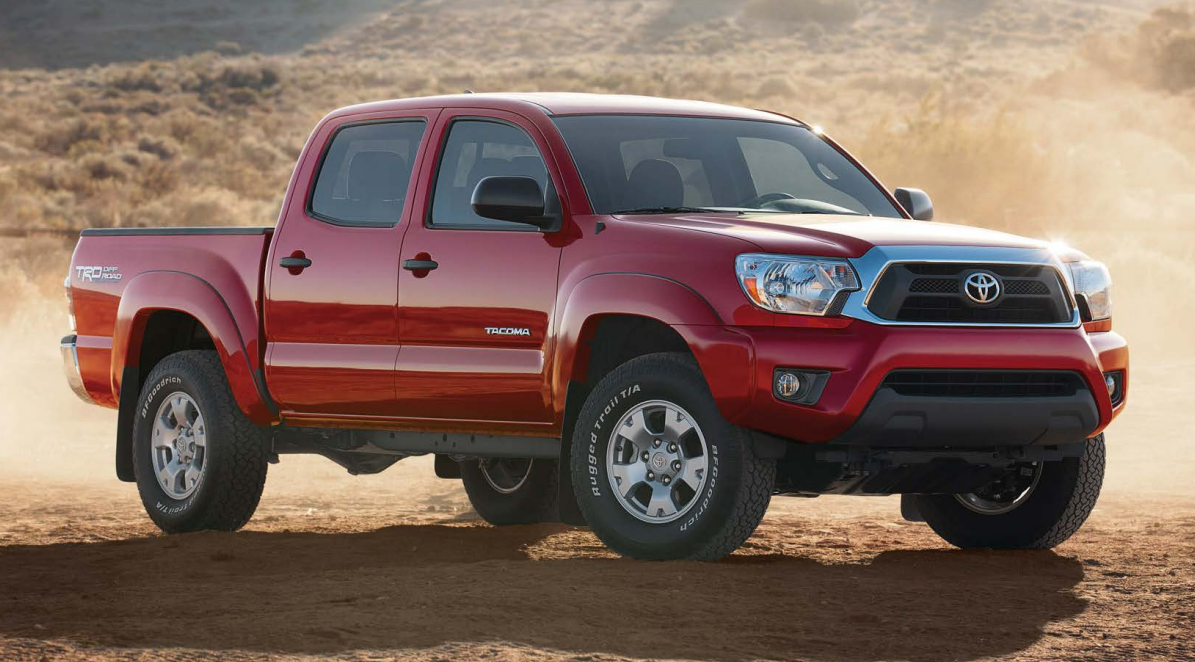
Photo by Toyota
Pros
- Reliable and durable construction
- Off-road capability enhanced by TRD options
- Versatile engine choices
- Multiple configurations available
- Strong resale value
Cons
- V6 has poor fuel efficiency
- Ride can feel stiff
- Interior design is outdated
- Limited towing capacity compared to competitors
- Known rust issues in certain climates
- Higher price than similar midsize trucks
2016-2023 Models(Third Generation)— Updated Design with Solid Reliability
The 2016–2023 Toyota Tacoma models introduced refreshed styling and improved technology while maintaining the truck’s long-standing reliability reputation.Buyers could choose between a 2.7L I4 or a 3.5L V6 with direct injection. The TRD Pro, in particular, delivered superior off-road performance with FOX shocks, an upgraded suspension, and skid plates. Toyota Safety Sense brought modern driver-assistance features, improving long-term reliability and safety across these models.
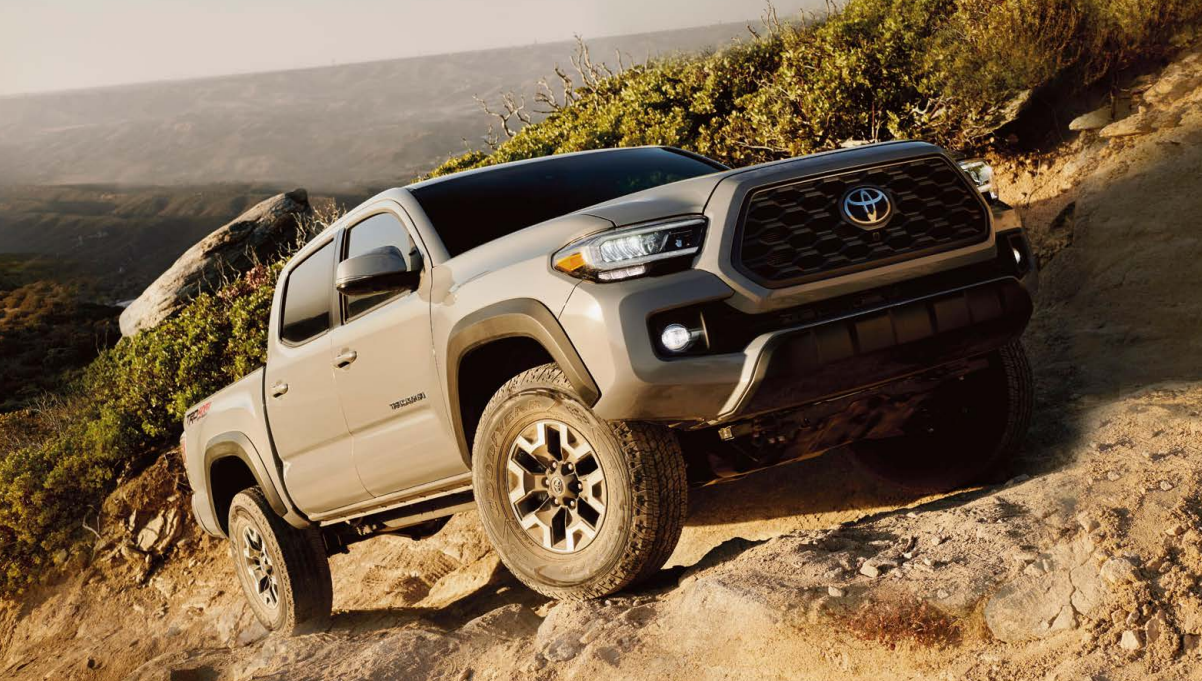
Photo by Toyota
Pros
- Exciting off-road capability
- Multi-terrain CRAWL system
- Strong durability and reliability
- Excellent resale value
- Advanced safety features
- Modern infotainment features
- Diverse trim and configuration options
Cons
- 3.5L V6 may feel underpowered
- 6-speed automatic can be sluggish
- Less fuel-efficient than rivals
- Slow acceleration when towing
- Stiff ride quality
- Cramped rear seating
- Higher pricing across trims
2024-Present Models(Fourth Generation) — Modern Updates with Continued Reliability Focus
The later 2024–Present models build on this reputation for reliability. Beginning in 2021, Toyota introduced a dealer-installed lift kit to enhance off-road performance. In 2023, a new generation of the Toyota Tacoma was revealed, marking one of the most significant overhauls in the truck’s history. Fourth Generation models reflect Toyota’s commitment to continued innovation in capability, comfort, and reliability.
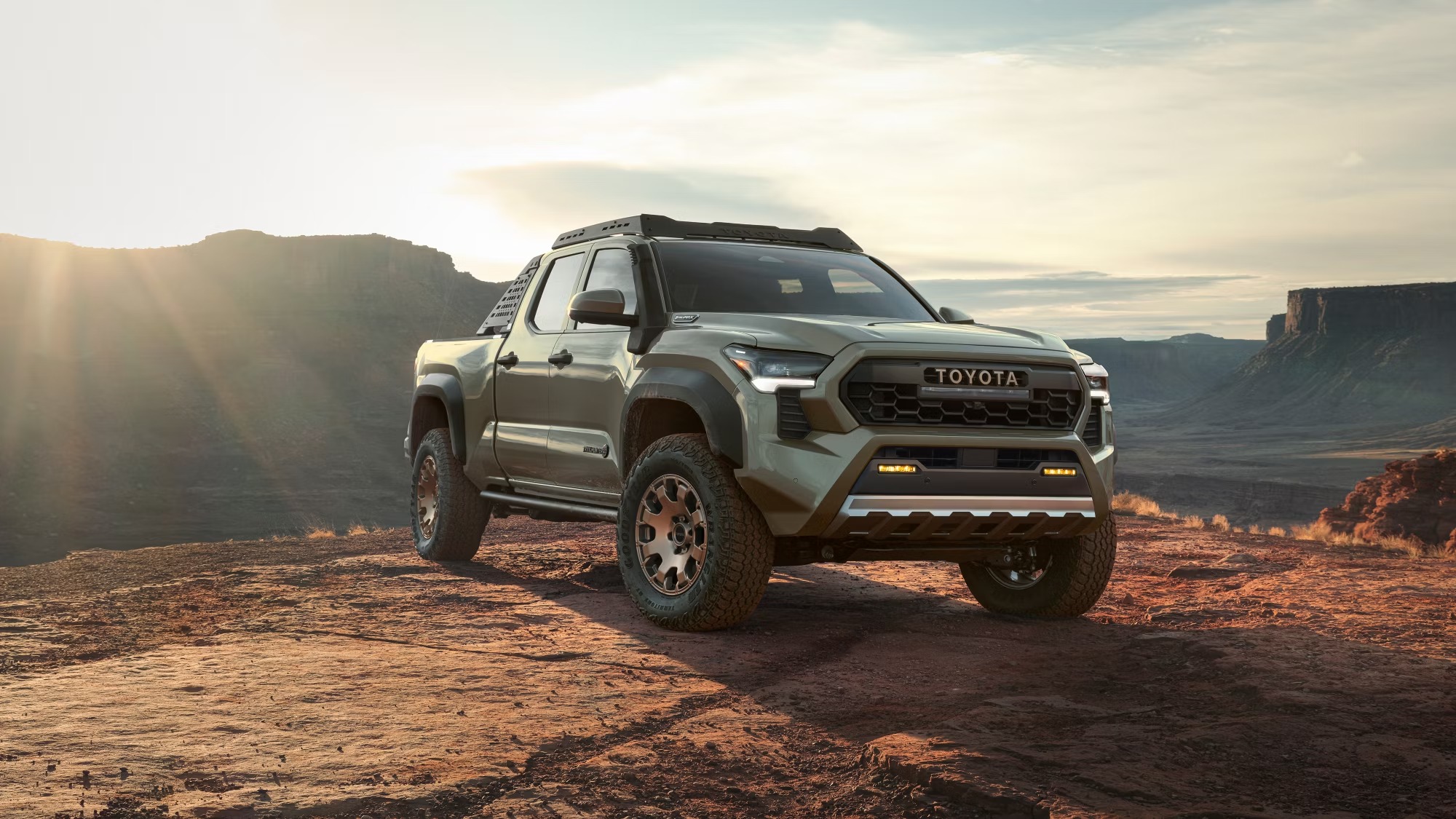
Photo by Toyota
Key Improvements in Recent Models
- New TNGA-F platform
- Higher ground clearance
- Slimmer, more athletic body design
- Eight trim levels, including Trailhunter and PreRunner
- XtraCab and Double Cab configurations
- Two bed sizes
- Coil-spring rear suspension on select models
- Hybrid powertrain available on upper trims
- 2.4L turbo engine available across the lineup
Pros
- Comfortable seating
- Wireless charging
- Large infotainment screen
- Physical buttons and knobs for easier uses
- Upgraded safety features
- Excellent visibility
- 360º camera
Cons
- Limited rear legroom
- Backup camera distortion
- Short remote-start range
- Rear seat doesn’t fold flat
- JBL audio performance varies
- Ventilated seat fan noise
Common Issues That Affected Certain Toyota Tacoma Year Models
While many Toyota Tacoma units are known for long-term durability and high resale value, certain models have experienced recurring problems — not all used Tacomas are equal. Below are the most commonly reported issues , based on owner feedback and recall history. We explain issues more specifically in Toyota Tacoma Years to Avoid.

Photo by Toyota
2006–2009
- Manual transmission clutch wear / pedal failure
- Frame rust in salted or coastal regions
- Paint peeling and clear-coat issues
- Shifting hesitation and drivability problems
- Steering wheel vibration at highway speeds
- Early brake wear
- Electrical problems, including warning-light faults
2012
- Fuel-system problems, such as air-pump failures
- Steering link leaks and increased ball-joint wear
- Related recalls involving stability control
2016–2017
These years are often listed as the most problematic among used Tacoma purchases, with a wide range of engine and drivetrain issues:
- Oil or coolant leaks due to component material failures
- Direct-injection engine noise and fuel-pump “chirping”
- Drive-belt noise and water-pump issues
- Paint defects or seal leaks that may allow moisture intrusion
Common Issues Across Multiple Years and Inspection Tips
-
Rust / Corrosion
Particularly in climates with road salt or coastal air: frame, door sills, suspension mounts, and brake components are vulnerable. We recommend applying full-frame rust protection if you find a rust-free truck.
-
Always inspect carefully
Regardless of model year: check for structural rust, fluid leaks, suspension and drivetrain noise, incentive for a full test drive, and ensure all recalls are cleared.
Maintenance Tips for Extending Your Tacoma’s Lifespan
A properly maintained Toyota Tacoma can continue delivering strong reliability for many years. Following Toyota’s recommended service schedule is one of the best ways to protect long-term performance.
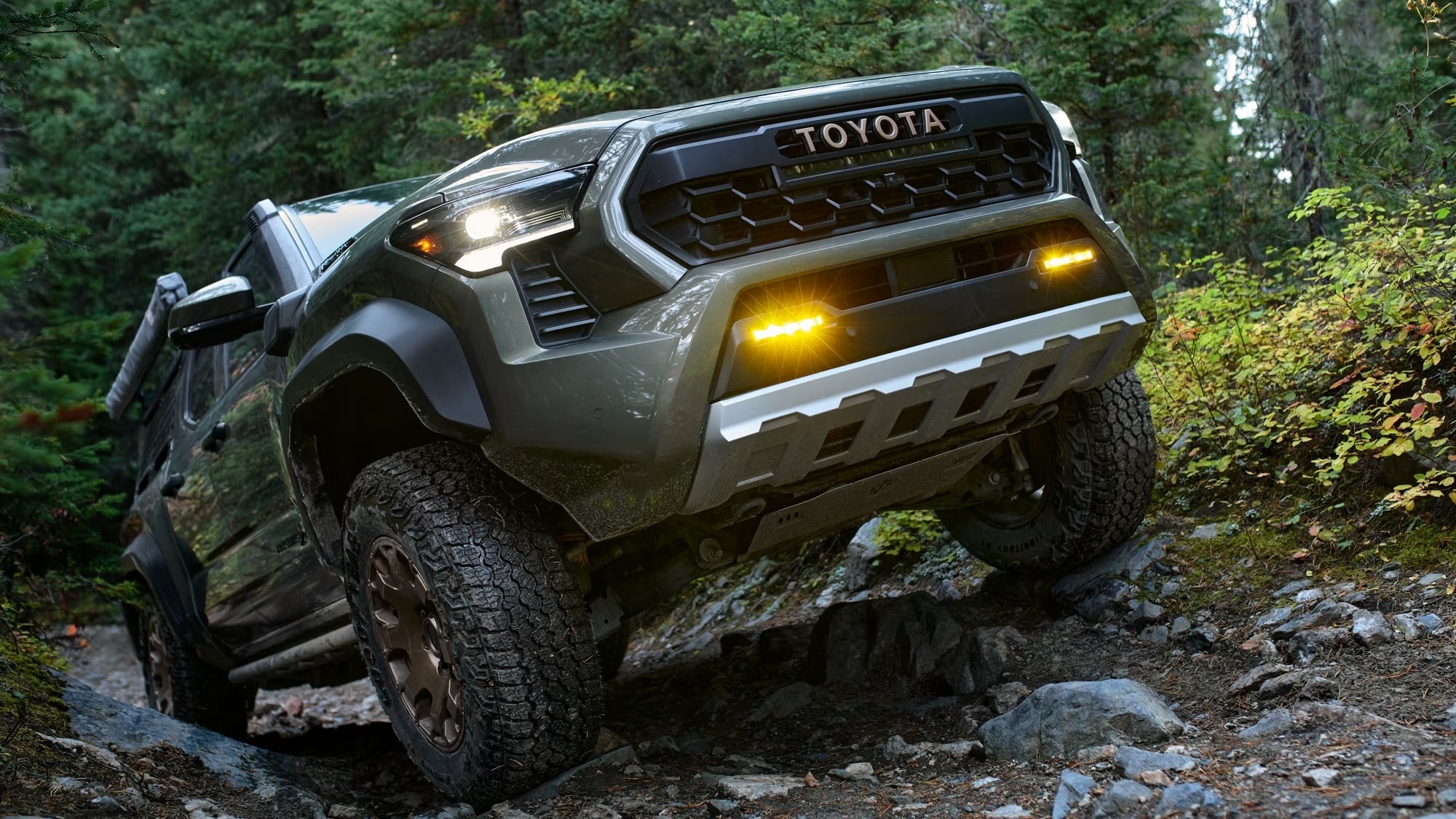
Photo by Toyota
Best Practices for Maintaining Your Tacoma
In addition to oil changes, fluid checks, and hose or belt replacement, here are some important things you can do to keep your truck running its best:
Tire Inspection and Rotation
Check tire pressure, tread depth, and overall condition. Rotate tires to promote even wear and extend their lifespan.
Brake System Inspection
Regularly inspect brake pads, rotors, and fluid levels. Replace any worn components to maintain optimal braking performance.
Battery Maintenance
Inspect the battery for corrosion, clean terminals, and ensure it holds a proper charge. Replace the battery as needed.
Air Filter Replacement
Replace the air filter periodically to ensure the engine receives clean air, which improves performance and fuel efficiency.
Fuel System Inspection
Check the fuel filter, injectors, and lines for any signs of wear or damage. Replace components as necessary.
Exhaust System Inspection
Inspect the exhaust system for leaks, rust, or damage. Ensure that the catalytic converter and other emissions components are functioning properly.
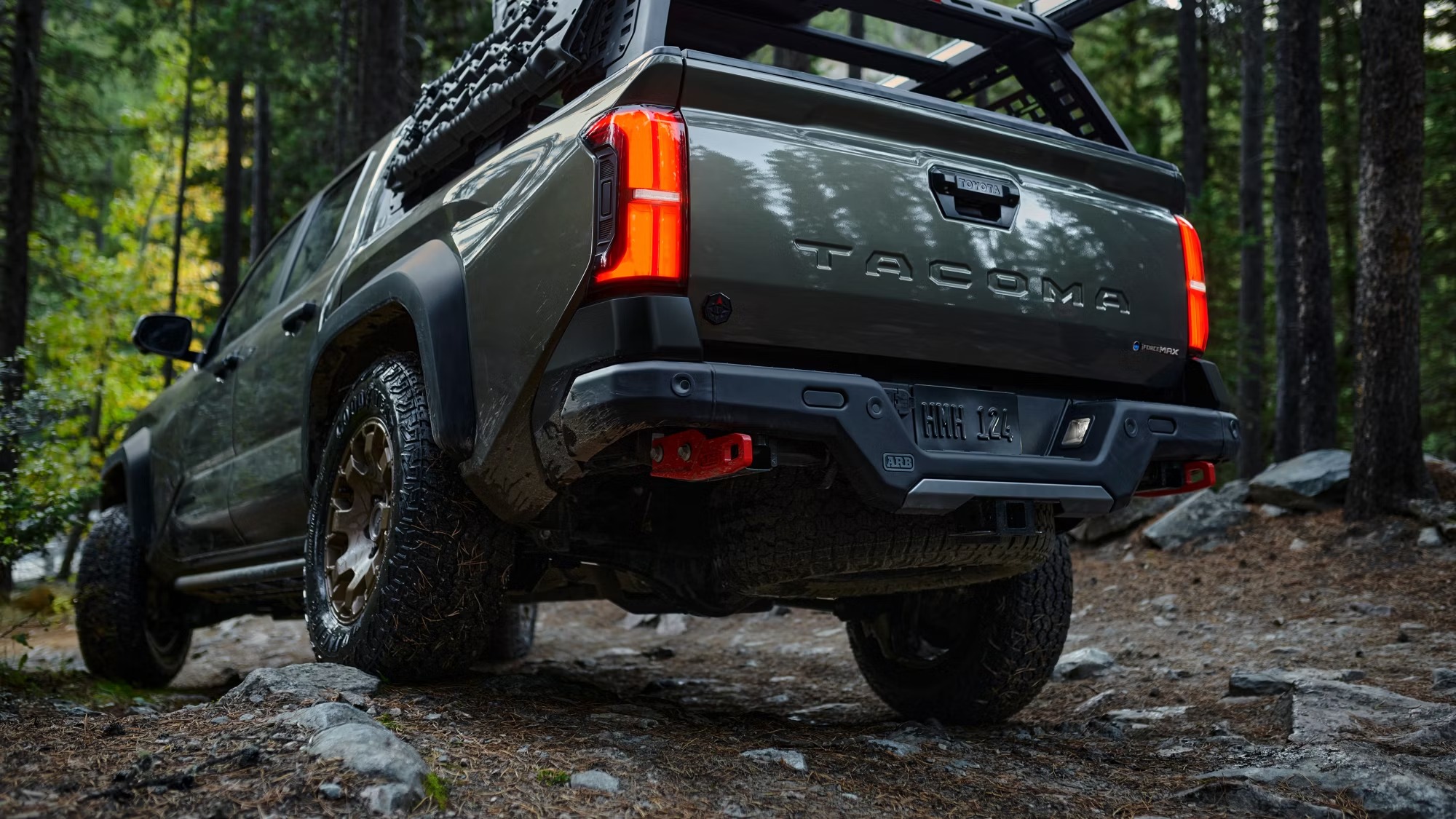
Photo by Toyota
Suspension and Steering Components
Regularly inspect shocks, struts, ball joints, and other suspension and steering components for wear or damage.
Lighting and Electrical System
Test all lights, including headlights, brake lights, turn signals, and interior lights. Inspect the electrical wiring for any damage or loose connections.
Transmission Maintenance
Regularly check the transmission fluid level and condition. Follow the manufacturer’s recommendations for fluid changes and inspections.
Cooling System Inspection
Check the radiator, hoses, and coolant levels. Look for leaks or damage and ensure the coolant is fresh and effective.
Differential and Transfer Case Fluid
If your truck has four-wheel or all-wheel drive, check and change the differential and transfer case fluids as recommended.
Wheel Alignment and Balancing
Ensure wheels are properly aligned and balanced to prevent uneven tire wear and maintain handling performance.
Air Conditioning and Heating System Check
Regularly inspect the A/C and heating systems to ensure they are functioning correctly. Check for refrigerant leaks and proper airflow.
Lubrication of Moving Parts
Lubricate all moving parts, including hinges, joints, and bearings, to prevent wear and tear.
Inspection of Body and Frame
Regularly check the truck’s body and frame for rust, damage, or signs of wear, especially if the truck operates in harsh environments.
Routine Engine Diagnostic
Run a diagnostic test periodically to check for any hidden engine issues that may not be immediately apparent.
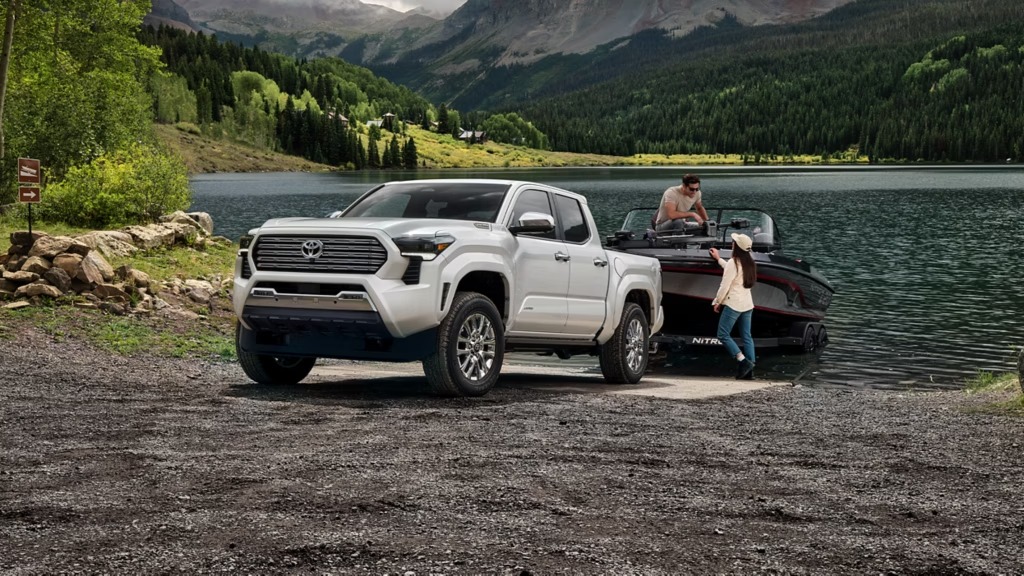
Photo by Toyota
These are the types of tasks that help people get 500,000 miles on their Tacoma, so don’t skip them.
When it comes to Toyota Tacomas, FLEX Automotive is an expert in answering questions you might have about the Tacoma in general. You’ll also find a selection of used Tacomas available in their showroom. They specialize in retro-mod custom fits for the Tacoma under their Renoca Windansea build. Contact them for more information on the Windansea or Tacomas in general.
Owner Reviews
Since the Tacoma has been around for a long time, it’s not hard to find a host of people who love their Tacoma and wouldn’t trade it for anything.
Real Owner Experiences
Happy Camper on cars.com said he replaced his Silverado 1500 Z71 with the 2022 SR with a V6 and SX package. He likes the size and style of the truck, and he bought it with a leveling kit and wheel spacers on it. While it drives like a truck, it has a “go-anywhere” look to it. It has met or exceeded all of his expectations.
Paul from Pittsburgh bought the Tacoma because they were known for their reliability and resale value. He bought the Off-Road model and has been driving it for over a year and a half.
Kortty from Arizona says he loves his Tacoma. It’s stylish, fun, and rugged all in one. It fits his personality and couldn’t be more pleased. Taco trucks matter to him.
Scott owns an SR5 Double Cab and says he only has minor complaints like the temperature panel is too small, as is the armrest console. Otherwise, it’s a win.
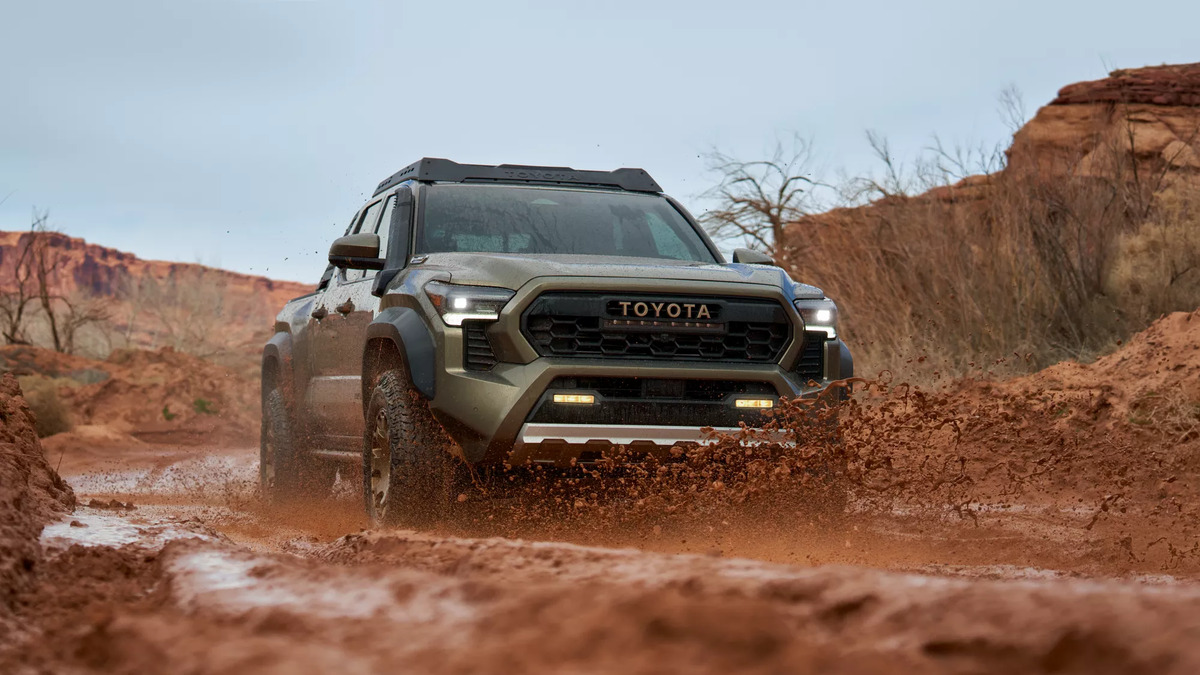
Photo by Toyota
Expert Opinions
When it comes to opinions, most of the reviews come from the folks at MotorTrend, Car and Driver, and Edmunds. They can be relied upon to give unbiased opinions about everything from fuel consumption to rattles and bangs. They have all reviewed the Tacoma over the years and weigh in every year.
Insights from Automotive Experts
Here is one of the most recent reviews for the Tacoma from industry professionals:
Edmunds writes: The pros include a wide variety of configurations and trims, the TRD versions are highly capable off-road, and there is a lot of power from the hybrid. They make a note of the noisy engine and the lack of backseat room. They consider the Tacoma to be the standard bearer for all trucks in this size range and give it a 7.6 out of 10. Low marks in the cabin space and interior brought the average down.
For more information on how MotorTrend viewed the new Tacoma, check out our article on the TRD Pro.
If you have any questions about any of the Tacoma trucks, don’t hesitate to contact us.



